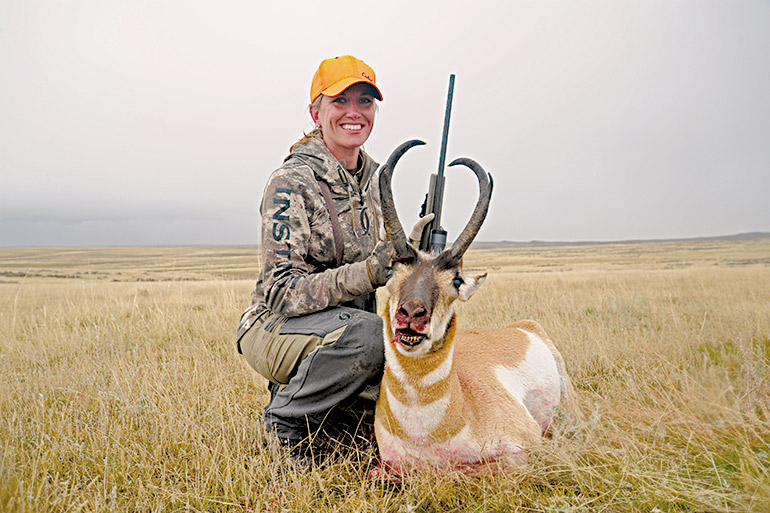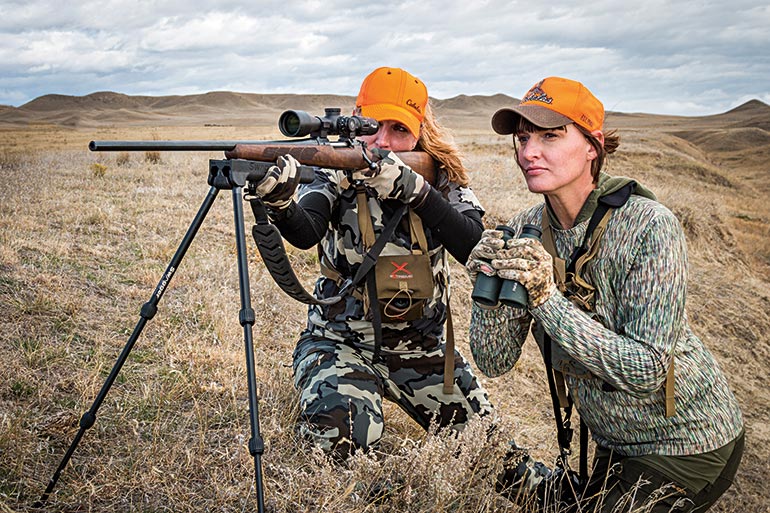
So you want to shoot a pronghorn….
The fastest land animal in North America is a fun species to hunt and offers a challenge for those looking to cut their teeth on an iconic animal of the West. Best part? It’s simple to chase the wary prairie speedsters all on your own.
The West offers plenty of public land to hunt, and a plethora of antelope roam the plains. Landowners are open to trespass fees, and even better, walk-in programs give you access to hunt antelope on private land for free. Opportunities abound. Here’s the down and dirty on where, how, and when to hunt the western pronghorn.
Where to Hunt
To hunt Antelope, you’ll have to apply for a tag. Over-the-counter tags are available in some states, but they are mostly for archery permits or leftover rifle tags that sell out quickly. Here’s a list of states you should apply in.
Arizona
Arizona is the top state for hunting trophy-quality pronghorn. Because of the trophy potential, many people put in for the lottery, so don’t plan on drawing any time soon—but the wait will be worth it. Archery permits are easier to draw than muzzleloader or rifle tags. The good news is that a lot of the units available to hunt are mainly public land. The state does offer “first come” permits after the draw if any tags are leftover, but they sell out quickly—apply for them by mid-March.
Colorado
The good thing about Colorado is the state offers over-the-counter archery tags for pronghorn (as well as leftover rifle tags). Premium rifle tags can take a stockpile of preference points to pull. Transferable landowner vouchers can be purchased without affecting your preference points, so start making friends in Colorado. Or buy an archery tag, grab your bow and hit it mid-August when the rut is heating up. Try decoying a buck into bow range—it adds a whole other level of badass to the hunt.
Idaho
All pronghorn hunting in the state of Idaho is by controlled hunt only. They issue a high number of tags—but offer nonresidents only 10 percent of allotted licenses. You won’t shoot a Booner buck, but it’s a good destination to see a lot of goats and take a respectable antelope. Some units offer unlimited archery tags with plenty of public land to hunt.
Montana
The state of Montana is iconic in itself, let alone to hunt its lands for any species. And the good thing about Montana is that it offers cheap pronghorn tags at little more than $200. It’s also a good state for hunters who have just begun applying for tags. You can draw as your second or third choice and still build points. Montana also has its Block Management system that opens private lands to hunting for better access.
New Mexico
New Mexico is known for producing respectable bucks and ranks No. 2 for B&C entries. The world-record buck was taken in 2013 in the Land of Enchantment. If you’re hunting private land, you can purchase an over-the-counter tag with written permission for most units. If you want to hunt public land, you have to draw. Ten percent of tags are given to nonresidents who book an outfitter, while only six percent are given to those who go DIY.
Nevada
This is a state that manages for trophy quality, so it’s tough to draw a pronghorn tag. However, you acquire a bonus point if you are unsuccessful, increasing your chances the next year. Nevada also squares its bonus points, which means each year your chances of drawing a tag go up. Nonresidents can apply for rifle or archery permits. If you’re looking for a good chance at a big buck, head to Nevada. Bucks that score over 80 inches are common.
South Dakota
South Dakota has more than just wild pheasants—pronghorn roam the rolling plains, too. The state is draw only (except for archery tags—they’re guaranteed). However, after the third drawing, leftover tags are made available first-come, first-served.
Utah
Utah is a sleeper state when it comes to pronghorn, but it produces good-sized antelope and should be hunted. Tags must be drawn in a lottery, but the state has a bonus-point system so you can increase your odds year after year. The good news is that success rates are high—100 percent in most units. Antelope can be hunted in 15 public units and 14 private CWMU ranches. Healthy populations can be found north of the Boulder Mountains and in the southwest desert.
Wyoming
Wyoming has more antelope than the rest of the continent, and success rates commonly exceed 85 percent. Wyoming also gives out the highest number of antelope tags compared to all other states. Nonresidents must apply for tags through a lottery, but leftovers go on sale after the draw. But be warned: They sell out quickly and are for units covered in private land. The good news is that some private land owners are open to allowing sportsmen to hunt their land for a small fee. Wyoming is the state to go to for both trophy potential and a respectable buck earned on a spot-and-stalk hunt.
Winning Strategies
Pronghorn are naturally very wary and are known for their uncanny ability to spot danger at long distances. This makes hunting them tough. Look for terrain that isn’t flat and wide open. Instead, hunt areas with rolling hills and ridges. This will give you much needed cover for an ambush.

When you spot a buck you want to go after, pay particularly close attention to terrain such as coulees, river beds, and bowls that can get you within shooting range undetected.
Choose a set of high-quality binoculars and a good spotting scope because you’re going to spend a lot of time behind glass. The white rumps are easy to spot against the sagebrush, but pronghorn aren’t stupid and will be eating and sleeping in wide-open spots where they can see danger coming. This means you’ll need to size up a buck from a long distance.
Make a game plan before you start stalking. When hunting Wyoming a few years ago, a friend and I spotted a buck that was sleeping a mile away. We could have just hiked straight to him, in which case we would have been busted long before we got close. Instead, we glassed the coulees and almost determined a route resembling a giant maze that would get us the closest to him. After a two-mile stalk, a 200-yard belly crawl, and two cacti to exposed body parts, I notched my tag on a beautiful pronghorn.
A pronghorn hunting myth is that your shots will be 300-plus yards. If you’re comfortable with that, then practice, practice, practice. But half the fun of stalking an antelope is seeing how close you can get. Your last few hundred yards are normally a crawl, so we recommend pants with knee pads or a cheap, removable set from your local hardware store. A thick pair of gloves to defend against cactus are also recommended. When you’re within 200 yards of a buck, your eyes are on him and not on the ground. Wear the necessary protection so you can focus on the task at hand. Carry shooting sticks or a pack to rest your rifle on when it comes time to take the shot as most likely there won’t be any natural shooting rests such as trees or rocks nearby.
If you’re driving to scout for herds, don’t stop when you spot them. Antelope tend to get nervous when they see trucks stopped for too long and usually make a dash for it. Drive the truck out of sight, hike to a vantage point, and glass. Stay below the peak so you aren’t silhouetted by the sky and thus noticeable. Make sure to work into the wind—like any ungulate, pronghorn can smell you coming.
Field Judge on the Fly
Pronghorn can be tricky to judge because often times they’re at long distances or because you have to do it quickly. (They aren’t the fastest land animal in North America for nothing.) What you’re looking for is length, mass, cutters, and curves.

Length
The lucky number for a trophy buck starts with 16-inch horns. To help you judge length, remember that the ears of anantelope are generally around six inches long. Watch for where the end of the ear hits on the horn and count up from there.
Mass
Just like with any other species, mass makes for a mature animal. If the bases of the buck are visibly bigger than his eye and he carries that mass up the horn, he’s a shooter.
Cutters
Also known as a prong, the cutter should stick out at least twice the width of the horn for maximum trophy potential.
Curves
Pronghorn have a unique curl to their horns that sets them apart. The deeper the curl, the longer the horns. The classic look is horns that form a heart shape.








